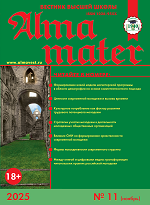Sergey A. Safontsev,
Doctor of pedagogical Sciences, Professor of Department of Psychology and Pedagogical of High Educational, Faculty of Psychology SFU, Rostov-on-Don, Russian Federation
Natalya Yu. Safontseva
Doctor of pedagogical Sciences, Professor of Department of Pedagogical, Faculty of technology, fine arts and professional education SFU, Rostov-on-Don, Russian Federation
E-mail: safontsev-sa@yandex.ru
Shown is a method to stimulate interest of students to the process of education. To elaborate problematic task situation of moderate difficulty, the authors used both sampling and expert methods, raising accuracy of measurement and reducing time on correction of task situation.
Key words: sampling method, stratification, expert method, concordance, difficulty.
References
- Safontsev, S.A., Safontseva, N.Yu. Objective function of conceptual learning information // Alma mater (Vestnik vysshei shkoly). — 2013. — No. 11. — P. 47—51.
- Safontsev, S.A., Safontseva, N.Yu. Principle of packaging rating points // Education and Science. — 2014. — No. 4. — P. 146—158.
- Raven, J. Competence in modern society: identification, development and implementation. — M.: Cogito-Center, 2002.
- Rudinsky, I.D. Structural basis of testology. — Kaliningrad: KSTU Publ., 2010.
- Naidenova, N.N. Formation of a representative sample. — M.: Logos, 2003.
- Glass, J., Stanley, J. Statistical methods in pedagogy and psychology. — M.: Progress, 1976.
- Rudinsky, I.D. Fundamentals of formal structural modeling of systems of education and pedagogical knowledge testing automation. — M.: Publisher «Hotline ? Telecom», 2004.
- Safontsev, S.A., Shamilyan, O.I. Quality measurement analysis of procedures of pedagogical diagnosis // Humanities and socio-economic science. — 2006. — No. 5. — P. 212—215.











.png)






